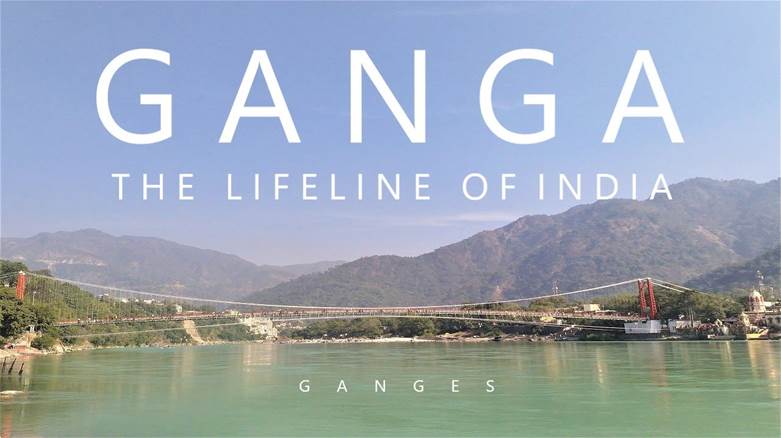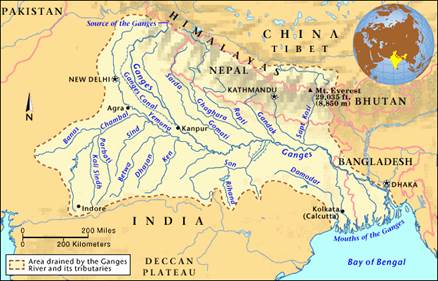Description

Copyright infringement not intended
In News
- The Director General of the National Mission for Clean Ganga has highlighted the features of the Arth Ganga model during his address to the Stockholm World Water Week 2022.
- Since 1991, World Water Week has been organised by the Stockholm International Water Institute to address global water concerns.
- The theme of 2022 is “Seeing the Unseen: The Value of Water”.
Arth Ganga Model
- The concept of Arth Ganga was introduced by the Prime Minister during the first National Ganga Council meeting in 2019.
- In the meeting, he suggested moving from Namami Gange to the Arth Ganga.
- Namami Gange initiated to clean the Ganga river.
- Arth Ganga aims to promote the sustainable development of the Ganga river and its surrounding areas, by boosting economic activities associated with the river.
- According to the government ‘Arth Ganga” would catalyse economic development in the Ganga basin and also generate an economic benefit of more than Rs 1000 crores over the next 5 years.
- Under Arth Ganga, the government is working on the following areas;
- Zero Budget Natural Farming: Chemical-free farming on 10 km on both sides of the river.
- Promotion of cow dung as fertilizer through the GOBARdhan scheme.
- Monetization and Reuse of Sludge and Wastewater: Reuse treated water for irrigation, industries and revenue generation for Urban Local Bodies (ULBs).
- Livelihood Generation Opportunities, by encouraging people to sell local products.
- Increasing public participation by increasing cooperation between the stakeholders involved with the river.
- Promote the cultural heritage and tourism of Ganga and its surrounding area.
- Promote institutional building by empowering local administration for improved water governance.

Ganga River
- The total length of the Ganga is approximately 2525 km.
- The headwaters of the Ganga called the ‘Bhagirathi’ is fed by the Gangotri Glacier and joined by the Alaknanda at Devprayag in Uttarakhand.
- At Haridwar, the Ganga emerges from the mountains onto the plains.
- The Ganga is joined by many tributaries from the Himalayas, a few of them being major rivers, such as the Yamuna, the Ghaghara, the Gandak and the Kosi.
- The river Yamuna rises from the Yamunotri Glacier in the Himalayas. It flows parallel to the Ganga and as a right bank tributary meets the Ganga at Allahabad.
- The Ghaghara, the Gandak and the Kosi rise in the Nepal Himalaya. They are the rivers which flood parts of the northern plains every year, causing widespread damage to life and property, whereas they enrich the soil for agricultural use.
- The main tributaries, which come from the peninsular uplands, are the Chambal, the Betwa and the Son. These rise from semi-arid areas, have shorter courses and do not carry much water in them.
- Tributaries of Ganga;
- Left: Ramganga, Garra, Gomti, Ghaghara, Gandak, Burhi Gandak, Koshi, Mahananda, Bramhaputra.
- Right: Yamuna, Tamsa (also called Tons), Karamnasa, Sone, Punpun, Falgu, Kiul, Chandan, Ajoy, Damodar.
- Enlarged with the waters from its right and left bank tributaries, the Ganga flows eastwards till Farakka in West Bengal. This is the northernmost point of the Ganga delta. The river bifurcates here; the Bhagirathi-Hooghly (a distributary) flows southwards through the deltaic plains to the Bay of Bengal.
- The mainstream flows southwards into Bangladesh and is joined by the Brahmaputra. Further downstream, it is known as the Meghna. This mighty river, with waters from the Ganga and the Brahmaputra, flows into the Bay of Bengal.
- The delta formed by these rivers is known as the Sundarban Delta.
- The Sundarban Delta derived its name from the Sundari tree, which grows well in marshland. It is the world’s largest and fastest-growing delta. It is also the home of the Royal Bengal tiger.
- The Namami Gange Programme is an Integrated Conservation Mission approved as a ‘flagship programme’ by the Union Government in June 2014 to accomplish the twin objectives of effective abatement of pollution, conservation and rejuvenation of the national river, Ganga.

https://indianexpress.com/article/explained/arth-ganga-govts-new-model-rivers-sustainable-development-8111967/
https://t.me/+hJqMV1O0se03Njk9

















